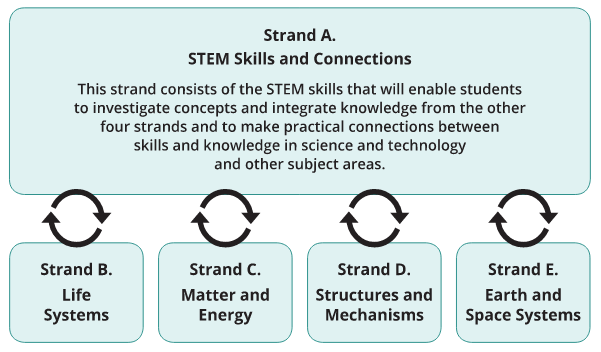Coding in intermediate science and technology
By: Steven Floyd and Lisa Anne Floyd
In this article, we’ll look at some of the key components related to coding in the grades 7-8 expectations in the new Ontario Science and Technology Curriculum released in 2022.
Grades 1-8 include one overall and two specific expectations related to coding for each grade. In order to provide educators of grades 7-8 with potential insight and direction for implementation in their classroom, we’ve broken down these expectations here.
Overall expectation for grades 7-8
A2. Coding and Emerging Technologies – use coding in investigations and to model concepts, and assess the impact of coding and of emerging technologies on everyday life and in STEM-related fields
| Grade 7 specific expectations: A2.1 write and execute code in investigations and when modelling concepts, with a focus on planning and designing programs A2.2 identify and describe impacts of coding and of emerging technologies, such as artificial intelligence systems, on everyday life, including skilled trades | Grade 8 specific expectations: A2.1 write and execute code in investigations and when modelling concepts, with a focus on automating large systems in action A2.2 identify and describe impacts of coding and of emerging technologies, such as artificial intelligence systems, on everyday life, including skilled trades |
What – What will students be doing?
All expectations related to coding can be found in Strand A -STEM Skills and Connections of The Ontario Curriculum, Grades 1-8: Science and Technology curriculum. Components of this strand are meant to be integrated within the learning of concepts from the other four strands, meaning that coding can be used to enhance, support, or demonstrate the learning within the other strands.

The terms used in expectations A2.2 show that students will be learning about the impact of coding, as well as other technologies, including artifical intelligence. This can be a fascinating area of focus, where students can consider all of the devices and applications in their lives, that are controlled or run with computer programming code. They can also explore, and develop and awareness of, artificial intelligence systems that are used today and that might be used in the future.
The terms used in the expectations A2.1 reveal that students will be writing code. This means that students will go beyond defining terms, or learning about code, and will engage in active learning through computing activities.
Expectation A2.1 indicates that students write and execute code in investigations and when modelling concepts, which is consistent with the approach described above for strand A, as it is being integrated into the learning within the other strands. Students can therefore use coding to investigate concepts related to Life Systems, Matter and Energy, Structures and Mechanisms, or Earth and Space Systems.
How – How will students be doing it?
The curriculum expectations include slightly different coding concepts for each grade, indicating that students will be focusing on a slightly different area of coding, as they complete their projects. This is similar to the grades 1-8 Mathematics curriculum, where students are coding in order to support their learning of mathematics, and where each grade has a slightly different area of focus for coding skills or concepts.
The areas of focus for each grade in the Science and Technology curriculum are listed below:
Grade 7: focus on planning and designing programs
As students are coding in the later grades, their projects can start to become more complex. It’s for this reason that it’s so important for students to be taught some planning and designing skills, so that they can organize their program before they begin to code. One way an educator might do this, is to connect the engineering design process (expectations A1.3) to the programming task. Students can use an engineering design process (EDP) to develop a larger project, and this way the students are getting experience with both the coding and EDP expectations in a valuable and authentic way.
Educators can also introduce students to flow charts, or other program planning tools. The grades 1-8 Mathematics glossary from the Ministry of Education include examples of flow charts:

Grade 8: focus on automating large systems in action
The grade 8 expectation provides a valuable opportunity for students to wrap up their coding journey, from grades 1-8, by completing a larger project. Students can develop a larger, automated system that solves a problem, and they can connect this project to learning from other strands. In grade 8 students also look at Systems in Action in the Structures and Mechanisms strand D, providing a rich opportunity for connections.
The table below summarizes these activities and includes how the coding expectations connect to other learning, from the the other strands in the grades.
| Grade | Programming Task | Coding Focus (A2.1) | Learning from other Strands (B-E) |
| 7 | use an engineering design process, or a flow chart, to plan out a program that will use robotics components to create a small earthquake simulator platform, for testing the strength of model structures | planning and designing programs | form, function, and design of structures (D2.2, D2.3, D2.5, D2.6, D2.7) |
| 8 | program sensors to detect when a plant needs watering, or a model of a water system that regulates the gates of a dam | automating large systems in action | systems in action (D2.1, D2.2), water systems (E2.3, E2.7) |
There are also articles describing potential applications for Primary and Junior to support the Science and Technology curriculum.